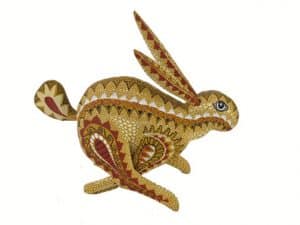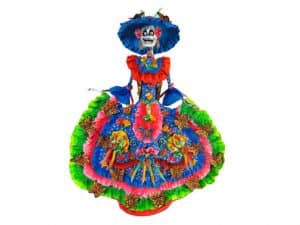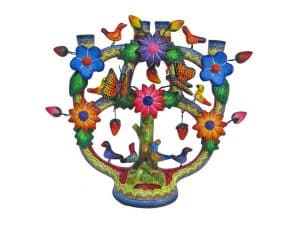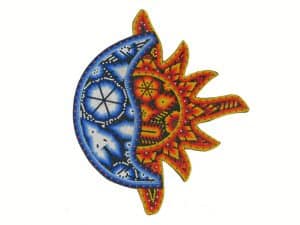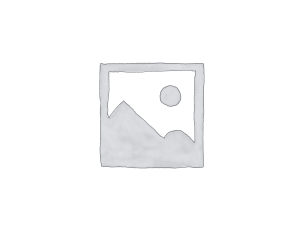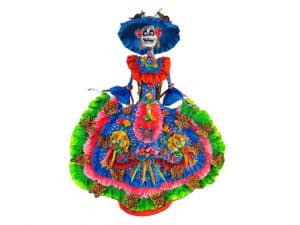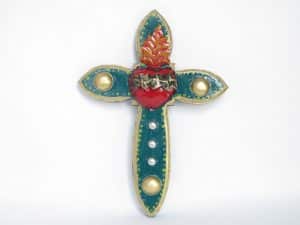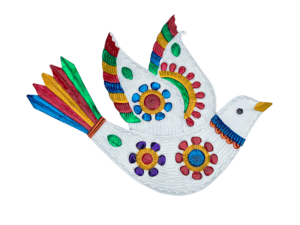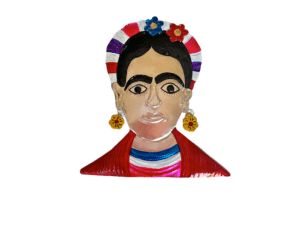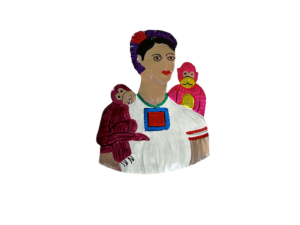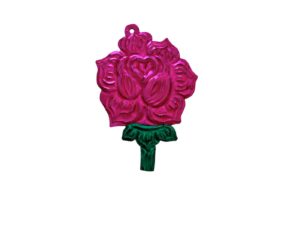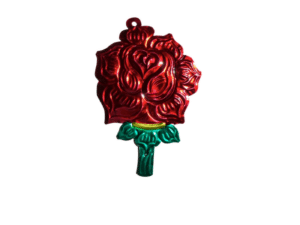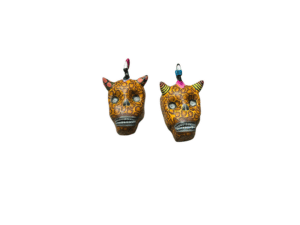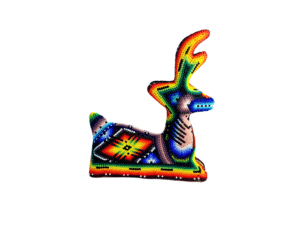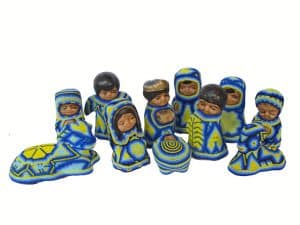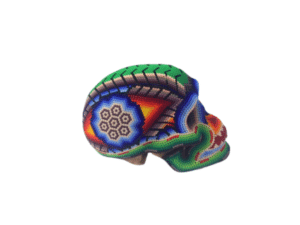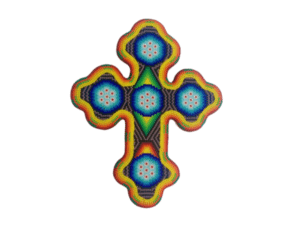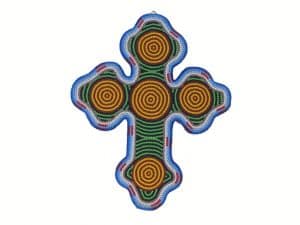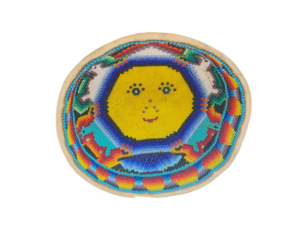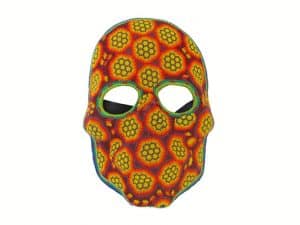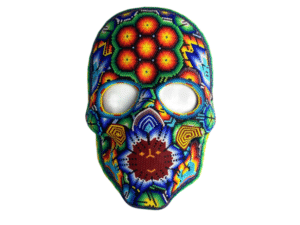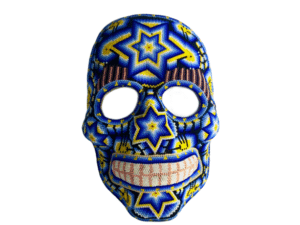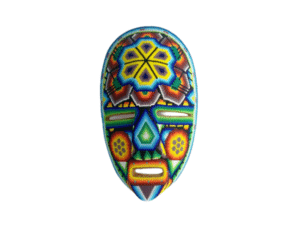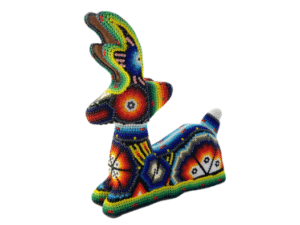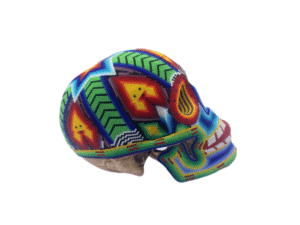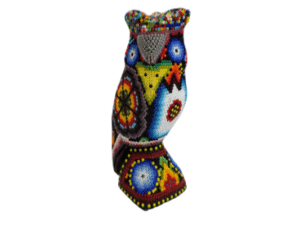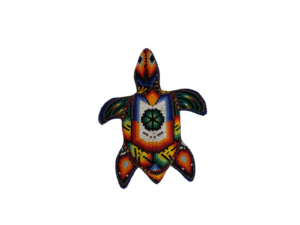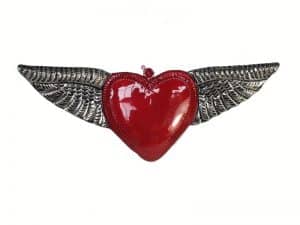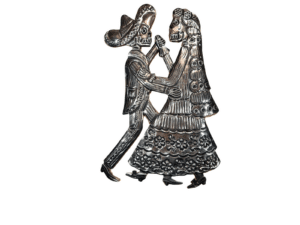Huichol Art
Huichol Bead Art
The Huichol people are an indigenous tribe living in secluded settlements within Mexico’s Sierra Madre mountains. They are known for their beautiful Huichol art — animal figures, jaguar heads, masks and ceremonial bowls coated with beeswax, then covered in tiny, glass beads. Hundreds of beads, set in place one at a time, produce dazzling patterns derived from their ancestry and spirituality. The creation of this Huichol bead art requires a great deal of inspiration, patience and concentration, all characteristics of the Huichol Indian outlook on life.
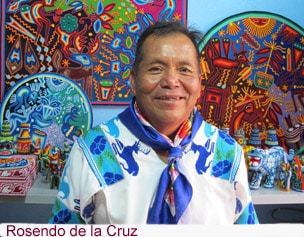
Your Title Goes Here
Your content goes here. Edit or remove this text inline or in the module Content settings. You can also style every aspect of this content in the module Design settings and even apply custom CSS to this text in the module Advanced settings.
Read More About Huichol Art
There are said to be only about 18,000 Huichol Indian people today. In addition to their native costumes and ritualistic ceremonies, they are known for their Huichol art — handmade objects covered with colorful, tiny glass beads arranged in intricate patterns. The Huchol are also known for their yarn “paintings,” patterns and designs made with colored strips of thin yarn, pressed in a flat background of bees was.
Who are the Huichol?
Huichol Indians are perhaps the most storied indigenous peoples living in Mexico today. Their homeland is located in secluded regions of the Sierra Madre mountains in the states of Jalisco and Nayarit. Descendants of the Aztecs, they still maintain their pre-Columbian traditions and language. They live in communities without electricity and running water, in houses with dirt floors and thatched-grass roofs.
The Huichols, or “Wixárika” as they prefer to be called, cling strongly to their ancient pagan beliefs. Their lives revolve around elaborate religious traditions which have remained unchanged since long before the Spanish conquest. The Huichols believe that their ancestors, the “first people,” were deities who lived in the Wirikuta desert but were later driven out into the mountains to live as mortal farmers. They revere the deer animal, which is an integral part of their spiritual ceremonies. Huichol culture also celebrates the peyote cactus and its hallucination-inducing flesh. It provides an emotional pathway through which they can connect with their gods.
What is Huichol art?
In Huichol life, religion and art are intertwined. The tribe is renowned for its beautiful beaded artwork, created for display in their temples and religious caves. Arte Huichol includes beaded eggs, jaguar heads and ceremonial bowls. Laden with colorful Huichol bead art patterns, the Indians consider their art to be sacred, bearing colors and designs derived from their spirituality. Huichol art is made by coating the bottom of a gourd, or the wooden figure of an animal, with a mixture of beeswax and pine tar. Then, one-by-one, the artist presses into place hundreds of brightly-colored glass beads. The creation of these works of art require a great deal of inspiration, patience and concentration, all characteristics of the Huichol Indian approach to life.
The ritual sharing of Huichol peyote
The focus of Huichol religious practice is the peyote hunt. This is a month-long pilgrimage during which families travel on foot, some 300 miles to the mystical desert land of Wirikuta, located within the state of San Luis Potosí. On the journey, they immerse themselves in rituals that they believe will open themselves to the feelings and perspective of their deity ancestors. When the pilgrims arrive at Wirikuta, they look for the deer god who then leads them to the sacred peyote plant. This is a spineless cactus, native to Mexico, which contains the psychoactive drug, mescaline. Researchers believe that Native Americans have used peyote in their religious ceremonies for around 5,000 years. On the Huichol pilgrimage, the first plant found is divided up amongst the members of the group so that all may eat a piece of peyote. This moment of sharing fulfills one of the highest goals in Huichol life. They have journeyed to the ancient paradise, transformed themselves into deities and communed with other gods. After the ritual sharing, the family members look for more, eventually eating enough of the peyote to have hallucinations and visions.
The psychedelic symbolism of Huichol bead art
From the ecstasy of that peyote experience comes the unique, colorful artwork of the Huichols. They see the creation of their Huichol art as the pathway to direct communication with the deities. The peyote plant is prominently featured in Huichol creations. Many of the Huichol bead art figures, from skulls to animals to bowls and plaques contain images of peyote, their plant of life. Sometimes it appears as an ear of corn, or as the antlers of a deer. Also prominent are images of the serpent, one of the most powerful animals in Huichol mythology, because it protects both corn and peyote. Serpent images represent four female deities, each a different color. For example, Kapiri, a white serpent, lives in the north. Others, corresponding to the south, east and west, are blue, red and black.
The tribe sees the creation of Huichol art as a pathway to direct communication with the deities. All of the Huichols’ colorful and unique pieces of art are laden with mystical symbols often fully understood only by the artists themselves. The ceremonial bowls, called jicaras, are made of cut-off gourds whose inner core has been coated with a mixture of beeswax and pine resin. Into this sticky material, the Indians embed hundreds of tiny, colored chaquira, or seed beads, creating a dazzling array of vibrant patterns. No two patterns are alike. In ancient times, the beaded bowls were made with bits of bone, coral, jade, seashells, and turquoise. In modern times, the artisans are using tiny, multi-colored glass beads from the Czech Republic. Their beaded animals are made in similar fashion, beginning with a base frame of wood or papier mache, that is then coated with the wax substance. This holds the tiny beads in place.
Huichol yarn painting
Intricate yarn paintings, made by pressing colorful bits of yarn into wax-coated plywood disks, are another form of Huichol Indian art. These paintings can be visually stunning. Each Huichol yarn painting tells a story from the tribe’s mythology, and each creation is one-of-a-kind. This form of art did not exist in the traditional Huichol culture, but is a more recent product that has proven to be very popular with tourists.
Showing all 14 results
-
Huichol Art Sitting Deer #1
Size: 6.5 inches tall x 5.5 inches long
This Huichol Art Sitting Deer (design #1) is formed on a wooden base. The glass beading is placed in intricate designs featuring geometric shapes.
SKU: HU_32$75.00 -
Huichol Art Nativity Set, 11-piece
Size: 4.75 inches tall x 8 inches in diameter
This Huichol Art Nativity Set features 11 figures including 8 people, a manger, and two animals. Beaded in colors of yellow and blue. Handcrafted by Rosendo de la Cruz and family.
SKU: HU_50$225.00 -
Huichol Art Skull #2
Size: 6 inches long x 4 inches wide x 4 inches tall
This Huichol art skull is covered with tiny glass beads. They are arranged in geometric patterns and peyote symbols, This Huichol Day Of The Dead art is handcrafted by Rosendo de la Cruz and family.
SKU: HU_53$140.00 -
Huichol Art Wall Cross With Bright Border
Size: 8.75 inches tall x 7.25 inches wide.
This Huichol Art Wall Cross is made with hundreds of green and red glass beads pressed into a coating of bees wax spread upon a pine wood base. It features blue circle accents and a bright yellow border. Handcrafted by the family of Rosendo de la Cruz in Guanajuato.
SKU: HU_44$79.00 -
Sale!
Huichol Wall Cross With Yellow Swirls
Size: 8.5 inches tall x 7 inches wide
This Huichol Wall Cross features yellow swirls with a green background. This wall hanging is built with green and yellow glass beads on a pine wood base. Handcrafted by the family of Rosendo de la Cruz in Guanajuato.
SKU: HU_45Original price was: $85.00.$68.00Current price is: $68.00. -
Huichol Prayer Bowl #1
Size: 5 inches in diameter
Huichol prayer bowl “jicara” is handmade by Rosendo de la Cruz in San Miguel de Allende. The gourd bowl is lined with beeswax and decorated with tiny, glass beads.
SKU: HU_55$44.00 -
Huichol Mask #1, Beaded Art
Size: 9.5 inches tall x 6.5 inches wide
Huichol Mask #1 is a beaded face mask built on a black, paper maché base, decorated in patterns of orange peyote blossoms. This one-of-a-kind mask is handcrafted by Rosendo de la Cruz and sons.
SKU: HU_65$119.00 -
Huichol Mask #2, Multicolored
Size: 9.5 inches tall x 7 inches wide
Huichol mask can be worn and is constructed with elastic strap and protective forehead pad. Created by Rosendo de la Cruz in San Miguel de Allende.
SKU: HU_54$119.00 -
Huichol Art Adult Face Mask #3, 9.5 inches tall
Beaded mask, constructed with elastic strap and protective forehead pad.
Measures 9 1/2-inches tall and 7-inches wide.
SKU: HU_56$119.00 Read more -
Huichol Mask, Yellow
Size: 8 inches tall x 5 inches wide
Huichol Mask features a yellow flower with slit eyes and mouth.
SKU: HU_67$78.99 -
Huichol Deer #4
Size: 5 inches long x 6.5 inches tall
Huichol Deer bearing unique color patterns of tiny glass beads. Pattern features the sacred peyote plant, symbolic to the Huichol indigenous people. Beads are pressed onto a beeswax coating on a wooden base. Crafted by Lauro De La Cruz Carrilo.
SKU: HU_71$49.00 -
Huichol Skull #5
Size: 8 inches long x 6 inches tall x 5 inches wide
Huichol Skull #5 beaded art. Features an embedded design of a star on the crown. This is a beautiful, one-of-a-kind example of Mexican folk art. Handcrafted in Mexico by Rosendo de la Cruz and family.
SKU: HU_72$240.00 -
Huichol Owl
Size: 5.25 inches tall x 2 inches wide x 2.5 inches deep
The Huichol Owl is beautifully designed and colorful. It is decorated with peyote flowers and it has a multi-colored crown.
SKU: HU_04$70.00 -
Huichol Turtle
Size: 6 inches long x 4.5 inches wide x 1.25 inches tall
The Huichol Turtle is decorated with a peyote flower and geometric designs. The head and front legs are lifted slightly.
SKU: HU_06$45.00



